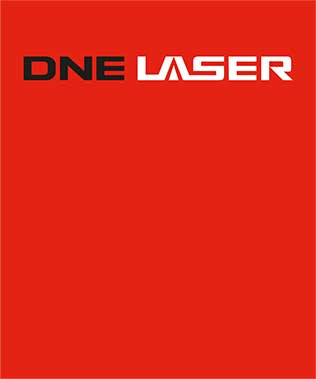Judgment standard of laser cutting machine processing quality
Published:2020-02-24 Browse:38Editor in charge:DNE Laser (Member of Bystronic)
In the laser cutting process of general materials, due to the fast cutting speed, the thermal deformation generated by the parts is very small, and the dimensional accuracy of the cut parts mainly depends on the mechanical accuracy and control accuracy of the worktable of the laser cutting machine. In the pulse laser cutting process, when adopting high-precision cutting device and control technology, the dimensional accuracy can reach um level.
There is no unified standard for the quality evaluation of laser cutting in the world yet. So far, there is no standard for laser cutting quality in China. The main basis for testing the quality of laser cutting is JIS and WES (welding specifications). In CEN (European Standardization Agency) and ISO (International Standardization Agency), there are standardization issues related to laser cutting. Regarding the ISO9000 series quality assurance methods mainly provided by the EU, the laser cutting standards and standard sample regulations were studied. Its contents include: cutting quality grade division, setting standards for samples and processing samples, optical systems, price samples Models and beam characteristics.
For laser cutting, the evaluation of its processing quality mainly includes the following principles:
1. The cutting is smooth, without streaks and brittle fracture;
2. The slit width is narrow, which is mainly related to the diameter of the laser beam spot;
3. The verticality of the slit is good, and the heat-affected zone is small;
4. No material is burned, no molten layer is formed, no large slag;
5. The roughness of the cutting surface. The size of the roughness of the surface is the key to measuring the quality of the laser cutting surface.
In addition to the above principles, the state and final shape of the melted layer during processing affect the above processing quality evaluation indicators directly.
The roughness of laser cutting surface mainly depends on the following three aspects:
1. The inherent parameters of the cutting system, such as the spot pattern, focal length, etc .;
2. Adjustable process parameters during cutting, such as power, cutting speed, the type and the pressure of auxiliary gas, etc .;
3. Physical parameters of the processed materials, such as laser absorption rate, melting point, viscosity coefficient of molten metal oxide, the surface tension of metal oxide, etc. In addition, the thickness of the workpiece also has a great influence on the quality of the laser-cut surface. Generally speaking, the smaller the thickness of the metal workpiece is, the higher the roughness grade of the cut surface can be.
In order to obtain a better surface quality level, the laser power, the cutting speed and other process parameters must be optimized many times. In general, for materials with the same characteristics and thickness, a set of optimal cutting process parameters will also result in different cutting surface quality. The melting point of metal materials is low, the thermal conductivity is large, the viscosity coefficient rate of the melt is small, and the surface tension of metal oxides is small. It is easy to obtain a high surface quality during laser cutting. When laser cuts a flat plate, it is easy to measure the surface quality, but when performing fine processing or cutting some complicated patterns, it is hard to measure it directly, and only by optimizing the test parameters to control its surface quality. Therefore, in order to facilitate automated cutting, the correspondence between externally optimized parameters and surface quality levels should be established.
 Bystronic (Shenzhen) Laser Technology Co., Ltd.
Bystronic (Shenzhen) Laser Technology Co., Ltd.